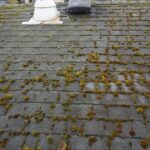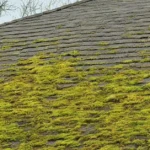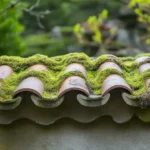Proper roof drainage is essential for maintaining the structural integrity of your home. A well-installed gutter system is critical in channeling rainwater away from your house, preventing potential water damage. If you’re considering a DIY gutter installation for roof drainage, this guide will help you understand the process and provide tips to ensure success.

Why Install Gutters?
Gutters play a vital role in maintaining your home. They help prevent soil erosion around the foundation, protect siding from water damage, and reduce the risk of basement flooding. Without gutters, water can damage your home over time, leading to costly repairs.
Planning Your Gutter Installation
Assessing Your Roof’s Needs
Before starting the installation, assess your roof’s drainage needs. Consider the roof’s size, slope, and the average rainfall in your area. These factors will determine the type and size of the gutters you need.
Choosing the Right Materials
Gutters are available in various materials, including aluminum, vinyl, and copper. Each material has its pros and cons. Aluminum is lightweight and rust-resistant, vinyl is affordable and easy to install, while copper offers a classic look but is more expensive.
Tools and Materials Required
To complete a DIY gutter installation for roof drainage, you’ll need several tools and materials. These include a ladder, measuring tape, a level, screws, a drill, and sealant. Ensure you have all the necessary tools before starting the project.
Gutter Components
Understand the components of a gutter system. This includes the gutters themselves, downspouts, elbows, hangers, and end caps. Knowing these parts will help you during the installation.
Step-by-Step Gutter Installation
Measure and Plan
Start by measuring the length of your roofline. Plan where the downspouts will be placed, usually at the corners of the house. Ensure that there is a slight slope towards the downspouts for proper drainage.
Installing the Hangers
Begin by installing gutter hangers along the fascia at intervals of about 24 inches. Use a level to ensure they are aligned properly. Secure them with screws, ensuring they are firmly attached.
Attaching the Gutters
Once the hangers are in place, attach the gutters. Start at one end and work your way to the other, ensuring they are securely clipped into the hangers. Use sealant to seal any joints and prevent leaks.
Installing Downspouts
Attach the downspouts to the gutters using elbows. Secure them to the house with brackets, ensuring they extend at least six feet away from the foundation to direct water away from the house.
Maintenance Tips
Regular maintenance is crucial for the longevity of your gutter system. Clean them at least twice a year, removing leaves and debris that can cause clogs. Check for leaks and repair any damaged sections promptly.
For more detailed maintenance tips, visit Roof Drainage Checklist.
Common Mistakes to Avoid
Incorrect Slope
A common mistake is installing gutters without the correct slope. Ensure there is a slight slope towards the downspouts to facilitate water flow.
Insufficient Downspouts
Another mistake is not installing enough downspouts. This can lead to water overflow during heavy rain. Ensure you have enough downspouts to handle the water volume.
Poor Fastening
Ensure that all components are securely fastened. Loose gutters can detach and cause damage during storms.
Additional Resources
For more information on roof drainage systems and solutions, check out Residential Roof Drainage Solutions.

FAQs
How often should I clean my gutters?
It’s recommended to clean your gutters at least twice a year, in the spring and fall. This helps prevent clogs and ensures your system functions properly.
What are the signs of clogged gutters?
Signs include water overflowing from the gutters, sagging gutters, and water pooling around the foundation. Regular inspection can help identify and resolve issues early.
Can I install gutters myself?
Yes, with the proper tools and materials, a DIY gutter installation for roof drainage is possible. However, if you’re uncomfortable with heights or unsure about the process, consider hiring a professional.
This article contains affiliate links. We may earn a commission at no extra cost to you.








